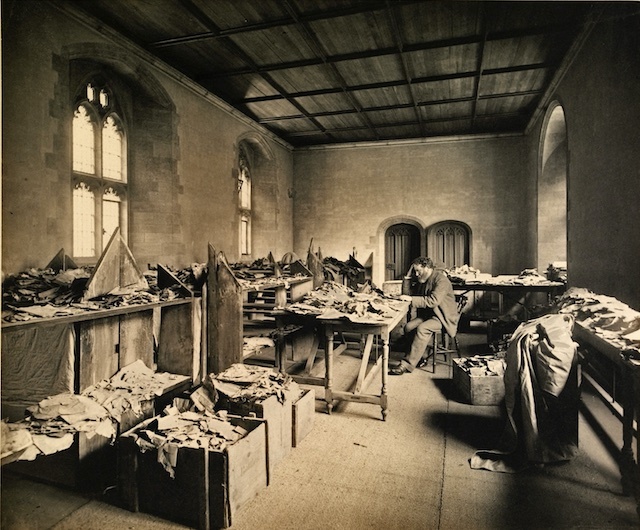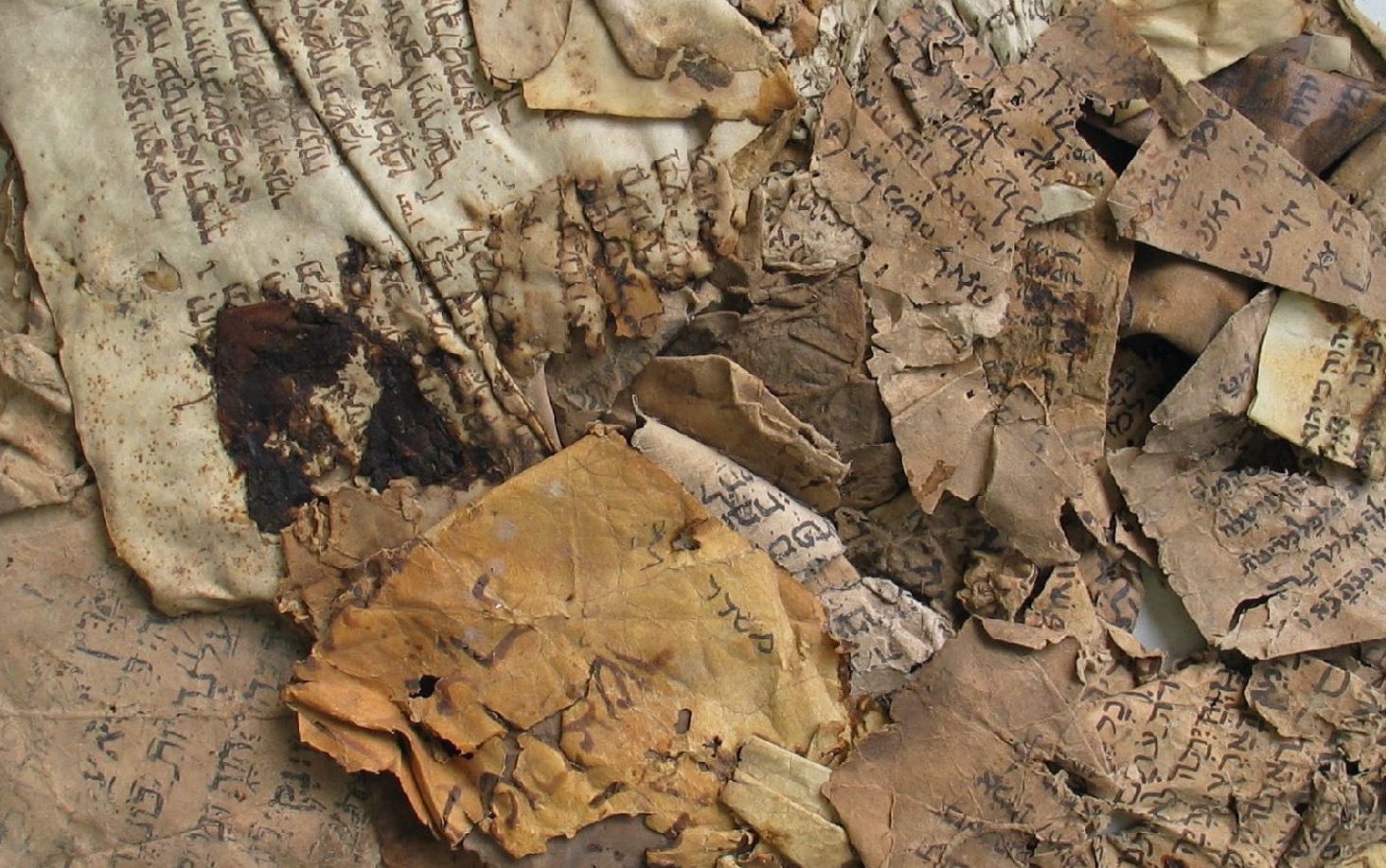The Taylor-Schechter Cairo Genizah Collection at Cambridge University Library is the world's largest and most important single collection of medieval Jewish manuscripts. For a thousand years, the Jewish community of Fustat – Old Cairo – placed their worn-out books and other writings in a purpose-built storeroom of the Ben Ezra Synagogue. In 1896–97 the Cambridge scholar, Dr Solomon Schechter, with financial help from the Master of St John’s College, Charles Taylor, arrived to examine it and, with permission, bring almost 200,000 manuscripts back to Cambridge, where they now form the Taylor-Schechter Cairo Genizah Collection.

The storeroom where the manuscripts were stored by the community of Fustat was a genizah, a sacred storeroom. According to rabbinic law, once a holy book can no longer be used (because it is too old, or because its text is no longer relevant) it cannot be destroyed or casually discarded: texts containing the divine name should be buried or, if burial is not possible, placed in a genizah.
From the early 11th century, the Jews of Fustat, one of the most important and richest Jewish communities of the Mediterranean world, reverently placed their old texts in their synagogue's genizah. Remarkably, however, they placed not only the expected religious works, such as Bibles, prayer books and compendia of Jewish law, but also what we would regard as secular works and everyday documents: shopping lists, marriage contracts, divorce deeds, pages from Arabic fables, works of Sufi and Shi'ite philosophy, medical books, magical amulets, business letters and accounts, and hundreds of letters: examples of practically every kind of written text produced by the Jewish communities of the Near East can now be found in the Genizah Collection, and it presents an unparalleled insight into the medieval Jewish world.

Alongside the T-S Collection, Cambridge University Library is also now the home of two other collections deriving from the same synagogue storeroom: the Jacques Mosseri Genizah Collection, assembled by and named after a successful Cairene businessman in the first decade of the twentieth century, and the Lewis-Gibson Collection, purchased by and named after two Scottish sisters who first brought the significance of the Cairo Genizah to the attention of Solomon Schechter in 1896. In 2006 the 7000-fragment Mosseri Collection came to Cambridge University Library on a 20-year loan, during which time it will be conserved and digitised. In 2014 Cambridge University Library and the Bodleian Library, Oxford, collaborated in their first ever joint fundraising venture to purchase the 1700-fragment Lewis-Gibson Collection. These fragments will be conserved and digitised and shared by the two libraries in perpetuity.
Tens of thousands of manuscripts from Cambridge’s Genizah Collections are available to view on Cambridge Digital Library. More manuscripts will be added on a regular basis, until all of Cambridge's Genizah manuscripts are online with accompanying identifications.
The lost Hebrew text of Ben Sira
Among the many lost Hebrew books recovered from among the fragments is the original version of the book of Ben Sira, a work dating from the second century BCE. Jewish doubt about just how sacred this book was had led to its exclusion from the Hebrew Bible and eventually to the loss of its Hebrew text. But the Genizah ensured that it was not lost for ever by preserving a 10th century copy.
The first Dead Sea Scroll
One of the most exciting finds in the Cairo Genizah is manuscript identified by Solomon Schechter as part of the writings of an unknown religious brotherhood. He called it the ‘Zadokite Fragment’. Fifty years later in 1947, the discovery of this text among the Dead Sea Scrolls at Qumran confirmed its antiquity and origins in the sectarian Judaism of the Second Temple Period. The mystery of how the text, now known as the 'Damascus Document' came to be circulating in early medieval Cairo, many centuries after the disappearance of the sect itself, still remains.
From the hand of Moses Maimonides (the Rambam)
One of the greatest figures of the Jewish Middle Ages, the philosopher, physician and codifier of Jewish law, Moses Maimonides (Moshe ben Maymun), was born in Cordoba in 1135, but came to Egypt as a young man. Thanks to his great learning and prodigious energy, he rapidly became the Head of the Jews in Egypt. Maimonides was well known before the opening up of the Genizah, but the discovery of many fragments relating to his life and times, exposing his public role as a pillar of the Jewish community, has shed light on the activities of the man behind the legend. Many manuscripts in Maimonides’ own distinctive scrawl have been identified, including drafts of his literary works, letters, and religious rulings in his role as Head of the Jewish community. Maimonides was also a doctor, physician to the caliph’s court and the Jewish community, and so we find copies of his medical works, books from his personal medical library and even the occasional prescription in his hand.
